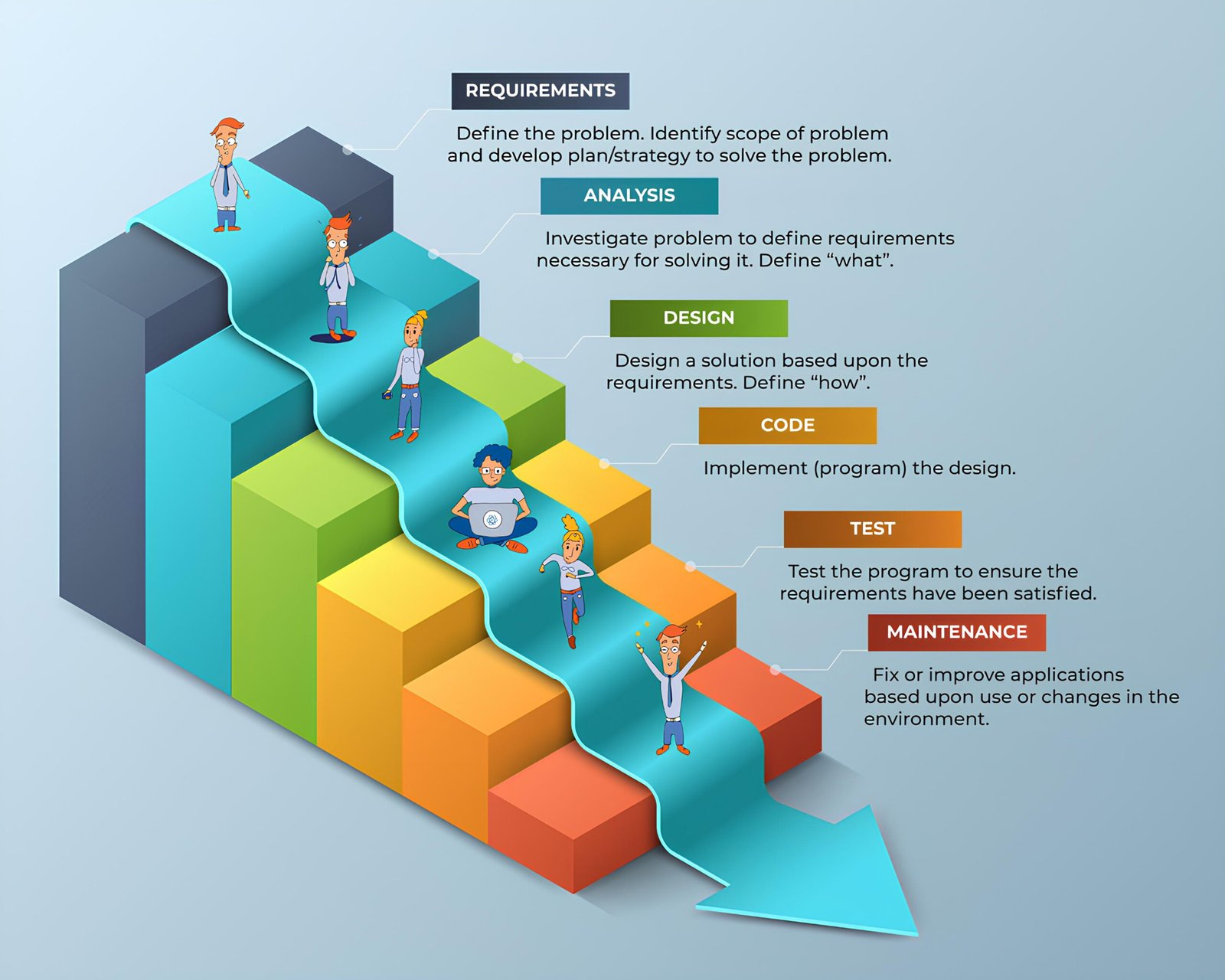Cryptocurrency in FinTech: Blockchain Technology
The evolution of finance has witnessed a groundbreaking innovation – the emergence of cryptocurrency. This digital form of currency, transcending traditional fiat systems, has ignited a transformative shift in the FinTech landscape. Pioneered by Bitcoin in 2009, the realm of crypto has since expanded with numerous cryptocurrencies reshaping global transactions through decentralized networks and blockchain technology.
The intersections of crypto and FinTech have sparked far-reaching disruptions, challenging conventional financial models. This article delves into the converging worlds of cryptocurrency and financial technology, exploring the defining attributes of crypto, its intersections with FinTech, and the regulatory landscape shaping this paradigm shift.
Defining Cryptocurrency
Cryptocurrencies are digital or virtual currencies secured by cryptography, making them nearly impossible to counterfeit or double-spend. They operate on decentralized networks using blockchain technology, a distributed ledger enforced by a network of computers.
What Is Cryptocurrency?
A defining feature of cryptocurrencies is that they are generally not issued by any central authority, rendering them theoretically immune to government interference or manipulation. Bitcoin, the first and most well-known cryptocurrency, was introduced in 2009 and operates on a peer-to-peer basis without intermediaries like banks or governments.
Understanding Blockchain
Central to the appeal and functionality of cryptocurrencies is blockchain technology. A blockchain is an online ledger that records transactions in chronological order. Each block contains a set of verified transactions, and any new block generated must be validated before being added to the chain, making it nearly impossible to forge transaction histories. The contents of the blockchain must be agreed upon by a network of individual nodes or computers that maintain the ledger.
What Is Crypto Mining?
Cryptocurrency mining is the process of creating new digital “coins” by solving complex cryptographic puzzles, validating transactions on a blockchain network, and adding them to the distributed ledger. Miners use specialized hardware and software to generate a cryptographic number that meets the network’s difficulty algorithm. The first miner to find the solution receives a reward in the form of newly minted cryptocurrencies, incentivizing participation in the mining process.
Overview Of FinTech
Definition And Examples
Financial technology, or fintech, refers to the integration of technology into the delivery of financial services. It encompasses any application, software, or technology that enables individuals or businesses to access, manage, or gain insights into their finances or conduct financial transactions digitally. Fintech has revolutionized the way people interact with their money, offering convenience, accessibility, and innovative solutions.
Some examples of fintech include:
- Online banking and mobile banking apps, allowing customers to manage their accounts, transfer funds, and perform transactions remotely.
- Peer-to-peer (P2P) lending platforms, such as LendingClub and Prosper, which connect borrowers and investors directly, bypassing traditional financial institutions.
- Cryptocurrency and blockchain technologies, like Bitcoin and Ethereum, enabling secure and decentralized digital transactions.
- Robo-advisors, such as Betterment and Wealthfront, which use algorithms and automation to provide personalized investment advice and portfolio management.
- Mobile payment solutions, like Apple Pay, Google Pay, and Venmo, facilitating seamless digital payments and money transfers.
History And Evolution Of FinTech
The roots of fintech can be traced back to the late 20th century with the advent of electronic banking and online stock trading. However, the fintech industry as we know it today truly gained momentum in the late 1990s and early 2000s, driven by technological advancements and the growth of the internet.
The evolution of fintech can be broadly categorized into three phases:
Fintech 1.0 (1886 – 1967): This stage involved building the infrastructure to support globalized financial services, such as the first transatlantic cable and the Fedwire electronic fund transfer system in the USA.
Fintech 2.0 (1967 – 2008): Marked by the installation of the first ATM by Barclays in 1967, this phase witnessed the digitalization of finances. It saw the establishment of NASDAQ, the world’s first digital stock exchange, and SWIFT, a communication protocol for cross-border payments.
Fintech 3.0 (2008 – Present): The post-financial crisis era, coupled with regulatory changes, opened the market to new fintech providers. This phase witnessed the birth of Bitcoin in 2009 and the rise of other cryptocurrencies leveraging blockchain technology.
In recent years, fintech has experienced rapid growth, driven by factors such as increasing consumer adoption of digital tools, the emergence of alternative finance models (e.g., crowdfunding, P2P lending), and the integration of advanced technologies like artificial intelligence and machine learning into financial services.
Intersections Of Crypto And FinTech
Cryptocurrency As A Subset Of FinTech
Cryptocurrency is a pivotal component of the broader FinTech landscape, representing a groundbreaking innovation in financial technology. It serves as a digital medium of exchange, a store of value, and a unit of measure, transcending traditional fiat systems. While cryptocurrencies themselves have little inherent value, they are utilized to price the value of other assets.
Bitcoin, launched in 2009, is widely regarded as the first cryptocurrency and digital asset. These crypto assets, also known as digital assets or cryptoassets, are digital representations of value made possible by cryptography and blockchain technology. Their original intent was to facilitate value transfers without relying on banks or trusted third-party entities.
Cryptoassets are categorized into three main types: cryptocurrencies (like Bitcoin), crypto commodities, and crypto tokens. Additionally, stablecoins, cryptocurrencies pegged to stable assets like the U.S. dollar, are emerging as a critical component in decentralized finance (DeFi).
Crypto In Financial Services
The intersections of cryptocurrency and FinTech have sparked significant disruptions, challenging conventional financial models and presenting new opportunities for innovation. Here are some key areas where crypto is making its mark in the financial services industry:
Payments and Remittances: Cryptocurrencies offer a faster and more cost-effective alternative to traditional cross-border payments and remittances. By leveraging blockchain technology, transactions can be processed without the need for intermediaries, reducing fees and processing times.
Lending and Borrowing: Decentralized finance (DeFi) applications built on blockchain technology enable peer-to-peer lending and borrowing without the need for traditional financial institutions. Users can earn interest on their cryptocurrency holdings or borrow against them using their crypto assets as collateral.
Banking Services: Banks and financial institutions are exploring ways to integrate cryptocurrencies and blockchain technology into their services. This includes offering crypto wallets, interest-bearing crypto accounts, and utilizing blockchain for faster payment processing and smart contract execution.
Trading and Investment: Cryptocurrency exchanges have gained significant traction, enabling users to buy, sell, and trade various cryptocurrencies. Additionally, crypto assets are increasingly being viewed as alternative investment vehicles, with institutional investors and hedge funds exploring ways to incorporate them into their portfolios.
Regulatory Compliance: Regulatory bodies are recognizing the potential of blockchain technology in enhancing compliance and anti-money laundering (AML) efforts. Blockchain’s transparency and immutability could streamline customer due diligence processes and enable more effective tracking of financial transactions.
As the adoption of cryptocurrencies and blockchain technology continues to grow, their intersections with FinTech are expected to deepen, driving further innovation and disruption in the financial services industry.
Impact Of Regulation On Crypto FinTech
The integration of cryptocurrency and FinTech has garnered significant attention from regulatory bodies worldwide, leading to the development of comprehensive frameworks aimed at mitigating potential risks while fostering responsible innovation.
Global Regulatory Frameworks
The Financial Stability Board (FSB) is at the forefront of establishing a global regulatory framework for crypto-asset activities. The framework is based on the principle of “same activity, same risk, same regulation,” ensuring that crypto-asset activities and stablecoins are subject to consistent and comprehensive regulation commensurate with the risks they pose.
Regulatory Objectives: The FSB recommendations aim to ensure that regulatory frameworks are applied to global stablecoin and crypto-asset activities in proportion to the risks they may pose to financial stability. This includes subjecting any crypto-asset activities seeking to perform an equivalent economic function to traditional finance to the same or equivalent regulation, regardless of the technology used.
Flexibility and Adaptability: The FSB recommendations are high-level, allowing jurisdictional authorities the flexibility to implement them by applying relevant current regulations or developing new domestic regulatory frameworks. This approach enables regulators to adapt to the rapidly evolving crypto-asset market.
Comprehensive Approach: The FSB and the International Monetary Fund (IMF) are collaborating to deliver a joint report to the G20 in September 2023. This report will synthesize policy findings from IMF work on macroeconomic and monetary issues and FSB work on supervisory and regulatory issues, supporting a coordinated and comprehensive policy approach to crypto-assets.
Implications For Crypto FinTech Integration
As the FinTech industry continues to innovate and disrupt traditional financial institutions, regulatory frameworks play a crucial role in ensuring consumer protection, maintaining stability in financial markets, and managing risks associated with FinTech activities.
Licensing and Registration: FinTech companies, including those operating in the crypto space, are required to obtain relevant licenses and registrations to comply with applicable laws and regulations, maintain operational standards, and prioritize consumer protection.
Consumer Protection: Regulatory bodies have implemented consumer protection laws to ensure transparency, prevent unfair or deceptive acts, and protect sensitive consumer data within the FinTech sector.
Anti-Money Laundering (AML) and Cybersecurity: FinTech firms must implement robust AML programs and cybersecurity measures to mitigate the risk of being exploited for money laundering purposes and to protect sensitive data and system integrity.
Cross-Border Compliance: As FinTech companies expand their reach globally, navigating cross-border compliance becomes increasingly complex, requiring adherence to multiple jurisdictional regulations.
RegTech Solutions: Regulatory technology (RegTech) solutions play a vital role in ensuring compliance for FinTech firms by automating compliance tasks, real-time monitoring of regulatory changes, enhancing risk assessment capabilities, improving reporting accuracy and efficiency, and integrating with existing systems for seamless implementation.
As the FinTech industry continues to grow and innovate, regulatory bodies around the world are adapting their approaches to keep pace with the financial sector while ensuring consumer protection, financial stability, and fair competition.
Conclusion
The integration of cryptocurrency and FinTech has ushered in a paradigm shift, reshaping the financial landscape as we know it. While cryptocurrencies have introduced decentralized, secure, and transparent transaction methods, their convergence with FinTech has unlocked unprecedented opportunities for innovation across various financial domains. From streamlining cross-border payments and enabling peer-to-peer lending to exploring alternative investment avenues, the synergy between crypto and FinTech holds immense potential for transforming traditional financial services.
As regulatory frameworks evolve to keep pace with these advancements, striking a balance between fostering innovation and managing risks remains a crucial objective. Coordinated global efforts, such as those by the Financial Stability Board and the International Monetary Fund, aim to establish comprehensive and adaptable regulatory guidelines, ensuring consumer protection and financial stability. With continued collaboration among stakeholders, the crypto-FinTech nexus has the potential to drive financial inclusion, enhance operational efficiencies, and empower individuals and businesses alike in an increasingly digital world.
Subscribe to our newsletter to receive future updates on Technology, Artificial Intelligence (AI), and Tech Trends. Explore our categories to find more relevant stuff. Stay informed and motivated with our most recent insights!




